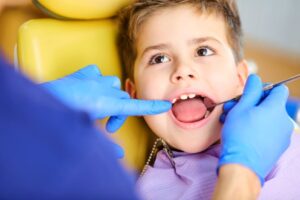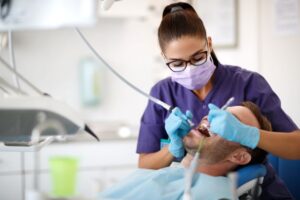
14 Jun The Basics of Brushing Your Teeth
Maintaining oral hygiene is crucial for overall health. This guide covers the basics of brushing your teeth, ensuring you follow best practices for a healthy smile.
Maintaining good oral hygiene is essential for overall health, and it all starts with the basics: brushing your teeth. This guide will walk you through the essential steps of brushing effectively, from selecting the right toothbrush to mastering proper techniques. Based in the UK, we understand the nuances and common practices that can make a significant difference in your dental care routine. Let’s dive into the world of tooth brushing and ensure you’re on the right path to a healthy, bright smile.
Choosing the Right Toothbrush
Selecting the appropriate toothbrush is the first step towards effective brushing. With so many options available, it can be overwhelming to decide which one is best. Generally, a toothbrush with soft bristles is recommended by dentists. Soft bristles are gentle on the gums and effective in removing plaque without causing damage to the enamel. While some may prefer hard bristles for a more intense clean, these can lead to gum recession and enamel erosion over time.
The size of the toothbrush head is another critical factor. A small-headed toothbrush can reach difficult areas in the mouth, such as the back molars, more effectively than a larger one. Moreover, ergonomic handles can enhance grip and control, making the brushing process more efficient and comfortable. Whether you opt for a manual or electric toothbrush, ensuring it meets these criteria will set a solid foundation for your oral hygiene routine.
Toothpaste: What to Look For
Toothpaste is not just a flavoured paste; it plays a crucial role in oral hygiene. Fluoride toothpaste is a staple recommended by dental professionals because fluoride strengthens tooth enamel and helps prevent decay. The amount of fluoride varies, so it’s essential to choose one with at least 1350-1500 parts per million (ppm) for optimal protection.
Whitening toothpastes are popular but should be used with caution. Some contain abrasive agents that can wear down enamel over time. If you’re keen on whitening, it’s advisable to use such toothpaste sparingly and consult your dentist for safe alternatives. Additionally, for those with sensitive teeth, toothpaste specifically formulated for sensitivity can help alleviate discomfort while providing the necessary protection.
Brushing Technique: Getting It Right
Brushing your teeth is more than just scrubbing back and forth. Proper technique is key to ensuring all surfaces of your teeth are cleaned thoroughly. Start by placing the toothbrush at a 45-degree angle to the gums. This angle allows the bristles to reach under the gum line, where plaque tends to accumulate.
Using gentle, circular motions, move the toothbrush across the outer surfaces of your teeth. Avoid using too much pressure, as this can cause gum irritation and enamel damage. After covering the outer surfaces, move on to the inner surfaces. Again, maintain the 45-degree angle and use circular motions. Don’t forget the chewing surfaces of your teeth, where food particles often get trapped. A back-and-forth motion works well here.
The duration of brushing is equally important. Dentists recommend brushing for at least two minutes, twice a day. To ensure you’re brushing for the right amount of time, consider using a timer or an electric toothbrush with a built-in timer.
The Importance of Brushing Your Tongue
Brushing your tongue is often overlooked but is a crucial part of oral hygiene. The tongue can harbour bacteria, leading to bad breath and a coated appearance. Using your toothbrush or a tongue scraper, gently brush your tongue from back to front. This simple step can significantly improve your oral health and freshen your breath.
Mouthwash: An Extra Boost
While brushing and flossing are the cornerstones of oral hygiene, using mouthwash can provide an additional layer of protection. Mouthwash can reach areas in the mouth that a toothbrush might miss, killing bacteria and freshening breath. There are various types of mouthwash available, including those for fluoride treatment, anti-bacterial, and ones designed for sensitive mouths.
However, mouthwash should not be used as a substitute for brushing and flossing. It is an adjunct to your routine, providing added benefits but not replacing the fundamentals. For best results, use mouthwash as directed, typically swishing for 30 seconds before spitting it out.
Flossing: Completing the Routine
Flossing is another vital component of oral hygiene that complements brushing. It removes plaque and food particles from between the teeth and under the gum line, areas that a toothbrush cannot reach. There are various types of floss available, including waxed, unwaxed, and dental tape. Choose one that you find easy to use and effective.
To floss properly, take about 18 inches of floss and wrap it around your fingers, leaving a few inches to work with. Gently slide the floss between your teeth, curving it around each tooth in a C shape and moving it up and down. Be careful not to snap the floss, as this can injure your gums. Flossing once a day, preferably before bedtime, will help maintain optimal oral health.
Common Mistakes to Avoid
Even with the best intentions, some common mistakes can undermine your oral hygiene efforts. One such mistake is brushing too hard. Applying excessive pressure can damage gums and enamel, leading to sensitivity and other issues. Another mistake is not changing your toothbrush regularly. Over time, bristles wear out and become less effective. It’s advisable to replace your toothbrush every three to four months or sooner if the bristles are frayed.
Rushing through the brushing process is another pitfall. Skimping on time means certain areas may not be cleaned thoroughly, allowing plaque to build up. Also, using the wrong type of toothbrush or toothpaste can impact your oral health. Always choose products that are recommended by dental professionals and suit your specific needs.
The Role of Diet in Oral Health
Your diet plays a significant role in maintaining healthy teeth and gums. Consuming a diet high in sugary and acidic foods can lead to tooth decay and enamel erosion. It’s important to balance your diet with foods that promote oral health, such as fruits, vegetables, dairy products, and lean proteins. Drinking plenty of water throughout the day helps wash away food particles and bacteria, keeping your mouth clean.
Avoiding snacks between meals can also reduce the risk of cavities. When you do indulge in sugary treats, try to brush your teeth or rinse your mouth with water shortly afterward to minimise the impact.
Regular Dental Check-ups: A Must
No oral hygiene routine is complete without regular visits to the dentist. Professional cleanings and check-ups are essential for maintaining optimal oral health. Dentists can detect early signs of decay, gum disease, and other issues that may not be apparent to you. Regular visits also allow for professional cleaning, which removes tartar that cannot be eliminated by brushing alone.
In the UK, it’s generally recommended to visit the dentist every six months. However, your dentist may suggest a different frequency based on your specific needs. Keeping up with these appointments ensures any potential problems are addressed promptly, maintaining your overall dental health.
Conclusion
Brushing your teeth is a fundamental aspect of oral hygiene, but doing it correctly requires attention to detail and consistency. By choosing the right toothbrush and toothpaste, mastering proper brushing techniques, and incorporating flossing and mouthwash into your routine, you can maintain a healthy and bright smile. Remember to avoid common mistakes, pay attention to your diet, and visit your dentist regularly. With these practices in place, you’ll be well on your way to achieving optimal oral health. Contact the experts at Hendford Dental Practice today.




Sorry, the comment form is closed at this time.